Japan -- School-age
Japan
Things to Know
Japan
Capital: Tokyo (One of the world's most populous cities.)
Currency: Japanese yen
Language: Japanese
Government: Parliamentary government with a constitutional monarchy.
Religions: Shintoism 70%, Buddhism 69%
Popular Name: “Land of the Rising Sun.”

Japan is a country lying off the east coast of Asia. Japan is an archipelago (a group of islands), it consists of a string of islands. There are four main islands: Hokkaido, Honshu, Shikoku, and Kyushu, and over 6,000 smaller islands.
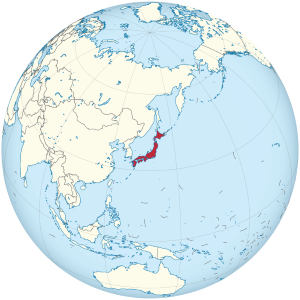
Flag of Japan
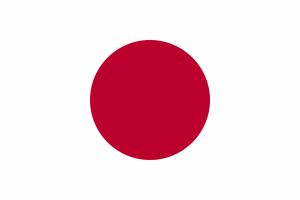
The national flag of Japan consist of a white field bearing a central solid red circle, this circle represents the sun (it never has rays). The national flag of Japan is called hinomaru which means "circle of the sun." In English sometimes the Japanese national flag is called “ the rising sun.” The Japanese national flag was officially adopted on February 27, 1870.
Video
Earthquakes and Volcanoes
The Ring of Fire is an area around the edges of the Pacific Ocean with many earthquakes and volcanic eruptions. National Geographic states, "Roughly 90% of all earthquakes occur along the Ring of Fire."
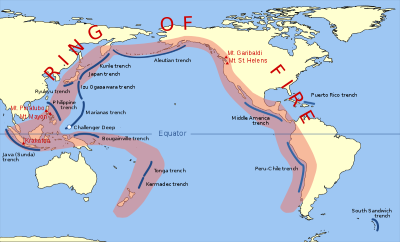
Japan is one of the world's most geologically unstable areas. Japan experiences many earthquake tremors yearly. Most of them are minor, though major earthquakes have caused considerable damage and loss of life. Offshore earthquakes can produce tsunamis, massive ocean waves that can wreak destruction along the Pacific shore. Violent volcanic eruptions occur frequently.

Mt. Fuji
Mount Fuji is the highest mountain and the tallest volcano in Japan.
Nature
Japan is mountainous, forested and has swift flowing rivers. Japan is mountainous, more the 80% is covered in mountains. Most people live in lowland urban areas along the coast.
The climate of Japan varies from tropical in the south to cool in north. Japan's plant and animal life is a variety of species due to the widely differing climate condition.
Animals
On the mainland islands Honshu, Shikoku, and Kyushu wander mandarin ducks, raccoon dogs, and wild boar. On Hokkaido lives the brown bear, striped squirrel, and red fox.
In the south are tropical animals such as the crested serpent eagle, the Iriomote wildcat, and the Amami hare.
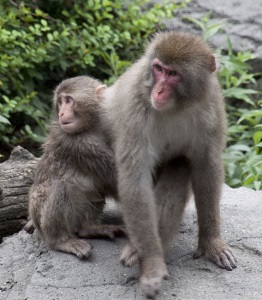
Japanese Macaque - Snow Monkeys
Video
Things to Do
Art
Cherry Blossoms
Blow paint tree trunks. On white paper, use watered-down black paint and a straw. Allow to dry, then apply small crushed squares of pink tissue paper to create the cherry blossoms.
Japanese Fan
Need: tongue depressors, paper plates, tempera paint, various colors, optional: sequins, ribbon, glitter, feathers, etc.
Fans have been used in Japan since ancient times. They were once used as an indication of a person's rank in society or profession.
Glue a tongue depressor to the top one of the plates, extending from the edge. Glue or staple two paper plates together with the tongue depressor between them. Decorate the paper plates with paint, ribbon, glitter, sequins, feathers, etc..
Paper-mache Daruma
Need: Oval balloons, newspaper, paper mache' paste( or use flour & water paste), paint and brushes
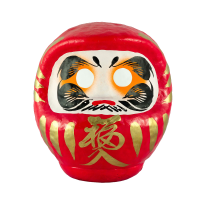
A daruma (a variation of the American punching bag). In Japan, the daruma is thought to bring good health. The daruma is probably Japan's best-known folk toy. You can see it frequently in Japan, including on key rings.
His name is short for Bodhidharma, a Buddhist priest from India who lived in the sixth century. Legends say that Bodhidharma sat absolutely still and meditated for nine years. He didn't move at all, and after nine years he found he had lost the use of his arms and legs. In fact, they had withered away.
So darumas are made with no arms or legs. They have weighted bottoms so that no matter how you roll them, they will always return right side up. Some say this symbolizes the spirit of patience, perseverance, and determination shown by the priest.
Writing
Haiku Poetry
Haiku is the shortest form of poetry. Traditionally, it is non-rhyming with three lines. All lines total seventeen syllables:
5 syllables in the first line
7 syllables in the second line
5 syllables in the third line
The subject matter of Haikus are the little things one sees, hears, tastes, smells, and feels, particularly in nature. Ancient Haikus usually had a seasonal clue in them as well: frog=early summer; cricket=fall; heavy snow=winter; and butterfly =spring.
Haiku Walk
Go for a "Haiku walk." Let the children take items for writing. Let the children point out and write down any small, interesting things they see. Then return to the classroom and write haikus. If the walk is not possible, gather different specimens from outside and put groupings on desks: pine cones, leaves, plants, etc. Allow children to observe, and then have them write haikus.
Haiku Starter worksheet (2-6)
Japanese writing, characters adapted from Chinese characters that were brought to Japan in the 5th century. Kanji is ideograms, symbols that represent whole words (representable objects are portrayed as pictures).
Practice writing Kanji.
Write a rebus story and insert appropriate Japanese Kanji symbols instead of pictures.
Kanji are the Chinese characters that are used in the modern Japanese writing system along with hiragana, katakana, and Latin characters.
Hiragana is used to write native words and suffixes for which there are no kanji.
Talking Hiragana Chart
There is also a printable chart.
Tanabata: Japan's Star Festival
Star Festival Strips
Cut colored construction paper into several long strips. Using colored pencils write a wish on a strip. Illustrate and decorate your strips. Punch a hole at one end of each strip. Loop and knot yarn or a ribbon through the hole. Tie the other end to a dowel stick or pencil to fly your Star Festival Strip.
Japan Printables
Japan Word search and more to print.
Japan Printable and Worksheets
Writing worksheets, crossword puzzle, and more.
Clothes
The everyday clothes for most Japanese people is Western clothing, which was introduced to Japan less than one hundred years ago. Japanese clothing many times can be a mix of traditional and Western styles.
Games
Jan-Ken-Pon, Japanese Game (rock, paper, scissors)
This traditional Japanese game has been used as a way to break ties and to make decisions for allotting privileges.
In unison, two players shout "Jen-Ken-Pon", and on "Pon" both thrust out one hand with either an open hand (representing paper), a closed fist (representing a stone) or two extended fingers (representing scissors).
Determining the winner is as follows: stone wins by breaking scissors; scissors win by cutting paper; and paper wins by enveloping the stone. If both players have the same hand motion, the game is quickly repeated until a decision is reached.
Traditional Japanese Games
Learn and play some Japanese games.
Sites to See
Kids Web Japan
A great site about Japan.
List of English Words of Japanese Origin
Edo Virtual Tour
Edo is the ancient name for Tokyo, Japan. Travel bake in time to the land of the Samurai and the Shogun.
Things to Do-Other Sites
Tammy Yee's Origami Page - easy paper folding crafts for children.
Crayola Kimono Doll Bookmark color page
Tanabata Lantern
Use crepe paper and craft sticks to create an unique paper lantern.
Crayola Japanese Lantern color page
Cut, color, and fold to make a Japanese Lantern.
Bonsai using chenille stems and styrofoam.
Woodblock Painting
Use styrofoam trays to create blocks that are stampers.
Fan of Japan - Crayola
Decorate a fan with symbols of the country, past or present.





